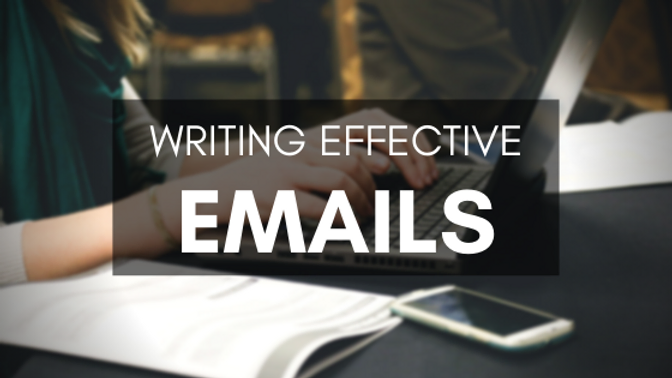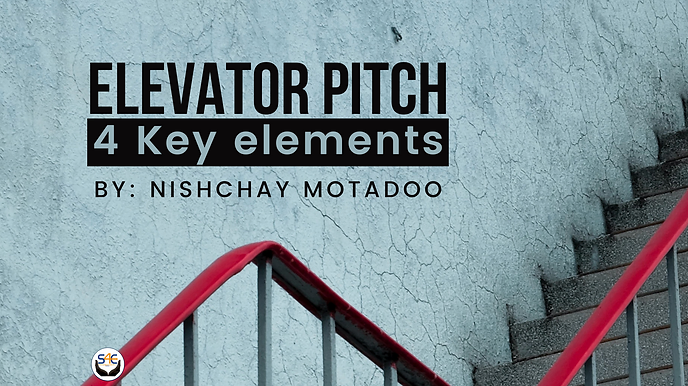

WRITING EFFECTIVE EMAILS
With the advancement in technology, people communicate with their co-workers, managers and clients using emails. Whether you are a new working professional or a CEO of an organization, emails are a part of your daily routine. As soon as the recipient gets a notification about an email, he/she will try to gauge whether the email is relevant or a complete waste of time. Therefore, writing an effective professional email is an essential skill.
Here are some tips that can make your email stand out and get a response from the recipient:
-
Effective subject line :
Subject line is the most crucial part of your email, as it is the first thing the recipient reads. An effective subject is when you have given enough information to the recipient to get them intrigued but not too much information that they do not need to open the email. An effective subject line is crisp and piques the receiver’s interest to open and read the email and respond.
-
Emails has to be Clear and Concise :
You may have received that one email that has made you think ‘get to the point already’ or I don’t have time for this, it’s too long’. Most people when writing an email forget that the receiver may not have enough time to read through a lengthy email. In order for you to get a response, write an email that is concise but clearly states the message.
-
Use professional language:
-
People tend to write as they speak which leads to using informal words/ jargons even when writing work emails. Make sure to use the formal vocabulary while drafting/replying to emails at office. Use of spoken language in official emails tends to have a negative impact/impression on the reader.
-
Use appropriate tone :
As you are aware, when reading an email your body language/facial expressions are not visible to the recipient. So, it becomes imperative that you use the appropriate words/tone while drafting emails to convey your message. Correct tone makes the email feel polite and professional.
-
Double check before you hit send :
Due to time constraints, it is easy to overlook the slip-ups you make while drafting an email. To avoid sending emails that may have grammatical/spelling errors, it is recommended that you proofread the email. When you review the email, you are able to identify the mistakes and correct them effectively.

The above tips will help you draft an effective email, however, you also need to know the widely accepted format of a professional email.
-
To:
Primary recipient has to be added in this section. It is better to avoid multiple recipients in this section. It is recommended to add the recipients after drafting the email to avoid sending an incomplete email.
-
CC/BCC:
CC stand for carbon copy. This section is used to add recipients that need to know the information in the email. BCC stands for blind carbon copy. Recipients in this section are not visible to other recipients. It is recommended not to use this section unless it is a confidential email address.
-
Subject Line:
One of the most crucial steps while drafting an email is a clear and concise subject line. All emails need to have a subject line that shows the receiver the importance of the email.
-
Salutation:
Emails will always start with a salutation to the receiver. Some salutations that can be used are:
o Dear (First Name) o Dear Mr./Ms. (Last Name) o Hi/Hey (First Name)
-
Greeting:
Instead of directly starting the email, it is recommended to start with a greeting to give the email a human touch. Some greetings that can be used:
o Hope you are doing well o Hope you had a great weekend o Greetings of the day
-
Introduction:
Begin your message by setting the context for the recipient in brief. This will enable the recipients to understand the pretext for the email.
-
Main message:
The next paragraph will be the main message. It is better to write the message concisely but ensure clarity. If the message consists of multiple points, it is recommended to use bullets/numbers. This will help the recipient read the email faster and understand it better.
-
Action from recipient:
Before ending the email, it is imperative to mention the call for action from the recipient which includes the action and duration. For instance, o Please feel to contact me in case of any queries o Kindly review the above point/attached documents and let me know if any changes are required o Kindly review and share your response within the stipulated timeframe
-
Greeting:
Once call of action has been added, it is recommended to end the email on a positive note with a greeting, such as, o Have a great day ahead o Have a lovely weekend
-
Signature:
It is important to add a signature at the end of the email for a recipient to know who
has sent an email. Most of the organizations follow the below format: o First & Last Name o Designation o Phone Number

Now that you know how to write and respond to general emails, you can use these in your day to day work lives.
If you want to know more on how to write and respond to challenging emails, you can visit www.search4excellence.com
1 like. Post not marked as liked1





